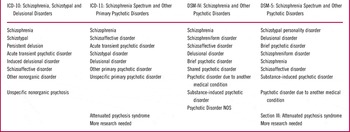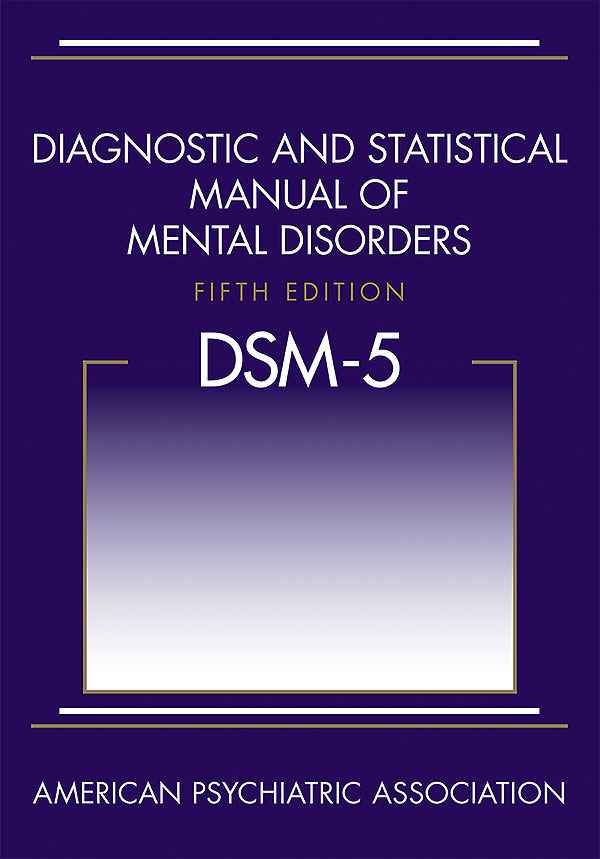

This means that people with schizophrenia may experience different symptoms at different times. Instead, the APA believed it was more accurate to describe the symptoms of schizophrenia as a spectrum. Scientists had stopped using the subtypes in their reports.They didn’t help with treatment decisions.Some people couldn’t be assigned a subtype based on their symptoms.The subtypes didn’t help predict how the condition would play out over time.There was no difference in brain functioning between the subtypes.People living with schizophrenia didn’t always experience the same symptoms or subtype.They weren’t very reliable descriptions.With the release of the DSM-5, these subtypes were removed for several reasons: People with this subtype don’t have symptoms that meet the criteria of the other types, but do have the main symptoms that meet the criteria for schizophrenia. People with this subtype don’t have the very noticeable symptoms of the other types, but evidence suggests that they have schizophrenia because they have negative symptoms or two more symptoms of schizophrenia that are not as strong, such as odd beliefs or strange experiences. no symptoms of “catatonic” or “disorganized” type.one or more delusional thoughts that they think about regularly, or sounds they hear regularly that don’t exist.They experience echolalia (repeating what others say) or echopraxia (repeating how others move).

They choose to put themselves in strange positions or show stereotypical movements, very noticeable gestures, or very noticeable grimacing.They experience a lot of unusual movements that don’t seem to have a purpose.People with this subtype must have at least two of these symptoms:
DSM 5 SCHIZOPHRENIA PROFESSIONAL
When a healthcare professional diagnosed schizophrenia, the person receiving the diagnosis was placed into one of the following subtypes.
DSM 5 SCHIZOPHRENIA FULL
In the DSM-4, the condition’s full name was “Schizophrenia and Other Psychotic Disorders.” Under this condition, there were five subtypes of schizophrenia. Now, for a doctor to diagnose schizophrenia, an individual must have at least two symptoms, and at least one of those symptoms must be one of the first three: Also, it’s difficult to determine what is and isn’t considered “bizarre.” The DSM-5 removed the second criteria because experts decided that it wasn’t very specific. But, your doctor could also diagnose schizophrenia if you had only one symptom and also experienced either “bizarre” delusions or hallucinations that included “a running commentary on a person’s thoughts/behavior, and/or two or more voices conversing.” Previously, you needed to have at least two of the above symptoms to receive a diagnosis. This is one of the biggest revisions from the DSM-4 to the DSM-5. However, the number of symptoms needed for diagnosis was changed.

DSM 5 SCHIZOPHRENIA MANUAL
When it comes to symptoms and other criteria for diagnosis, most differences between the fourth edition (DSM-4) and fifth edition (DSM-5) of the Diagnostic and Statistical Manual of Mental Health Disorders are minor changes in wording. Symptoms and other criteria: What has changed? They were created to guarantee a more reliable diagnosis. Instead, these changes involved creating a new set of guidelines for mental health professionals. In fact, since that time, researchers have shown that over 99.5% of people who received a schizophrenia diagnosis before the DSM-5 was published still qualified for a diagnosis. The changes didn’t affect people who were already diagnosed with the condition. These changes were created by the American Psychiatric Association (APA) and published in the fifth edition of the Diagnostic and Statistical Manual of Mental Health Disorders (DSM-5). In 2013, the way schizophrenia is diagnosed changed, and its formal name was revised from just “schizophrenia” to “schizophrenia spectrum disorder.” This allows healthcare professionals to diagnose the condition based on the severity of symptoms. Still, with proper treatment, a person with schizophrenia can be successful in school and work and enjoy a fulfilling personal life.

It’s a serious mental illness that affects approximately 3.2 million Americans. It causes them to see reality differently than others. Schizophrenia changes how people think, feel, and behave. This has helped mental health professionals provide a more reliable diagnosis. The DSM-5 modified the guidelines for diagnosing schizophrenia.


 0 kommentar(er)
0 kommentar(er)
